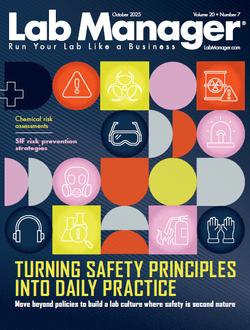December 17, 2012 — Adrian Cheng, a scientist at the Allen Institute for Brain Science, was named today in Forbes' second annual "30 Under 30" list of tomorrow's brightest stars. Cheng invented a powerful microscope technology that can image thousands of neurons in the brain simultaneously. The technique allows scientists to watch the working brain at unprecedented scale and resolution, capturing images nearly ten times faster than a video camera.
Cheng, 28, received his Ph.D. in physics from the University of California, Los Angeles where he invented the microscope technology, called STEM (Spatio-Temporal Excitation-Emission Multiplexing), and published the original work in the journal Nature Methods. Traditional techniques for viewing cells in the living brain can only capture a single cell or a handful of cells, without knowing their identities. Cheng's new technology enables scientists to view the location, shape, architecture, and genetic identity of entire neural circuits in the living brain.
Now a scientist at the Allen Institute, Cheng is building imaging capabilities for visualizing the brain at work as part of the Allen Institute's new neural coding initiative. This large-scale, multi-disciplinary research program aims to understand and uncover fundamental principles governing how the brain processes information to drive perception, behavior and other functions. Using the STEM microscopy technique, the neural coding initiative will catch brain circuitry in the act of translating light signals captured by the eyes into perceptions of complex scenes and behavioral responses. In keeping with the Allen Institute's open science research model, this work will provide publicly available data, tools and resources to scientists worldwide.
"This technology was built upon research efforts throughout the microscopy, vision research, and behavioral neuroscience communities," said Cheng. "It's the product of a truly interdisciplinary effort."
Forbes' "30 Under 30" lists thirty amazing individuals in fifteen categories under the age of 30 (available at www.forbes.com/under30). Forbes collaborated with experts in diverse industries to develop a list of 450 people under 30 who are making waves today, and who are destined to still be shaking things up years from now. The 15 categories include Art & Style, Education, Energy, Finance, Food & Wine, Games & Apps, Hollywood, Law & Policy, Media, Marketing & Advertising, Music, Science & Healthcare, Social Entrepreneurs, Sports and Technology.
Citation: Cheng et al. (2011) Simultaneous two-photon calcium imaging at different depths with spatiotemporal multiplexing. Nature Methods 8:139-142
December 17, 2012 — Adrian Cheng, a scientist at the Allen Institute for Brain Science, was named today in Forbes' second annual "30 Under 30" list of tomorrow's brightest stars. Cheng invented a powerful microscope technology that can image thousands of neurons in the brain simultaneously. The technique allows scientists to watch the working brain at unprecedented scale and resolution, capturing images nearly ten times faster than a video camera.
To continue reading this article, sign up for FREE to

Membership is FREE and provides you with instant access to eNewsletters, digital publications, article archives, and more.









